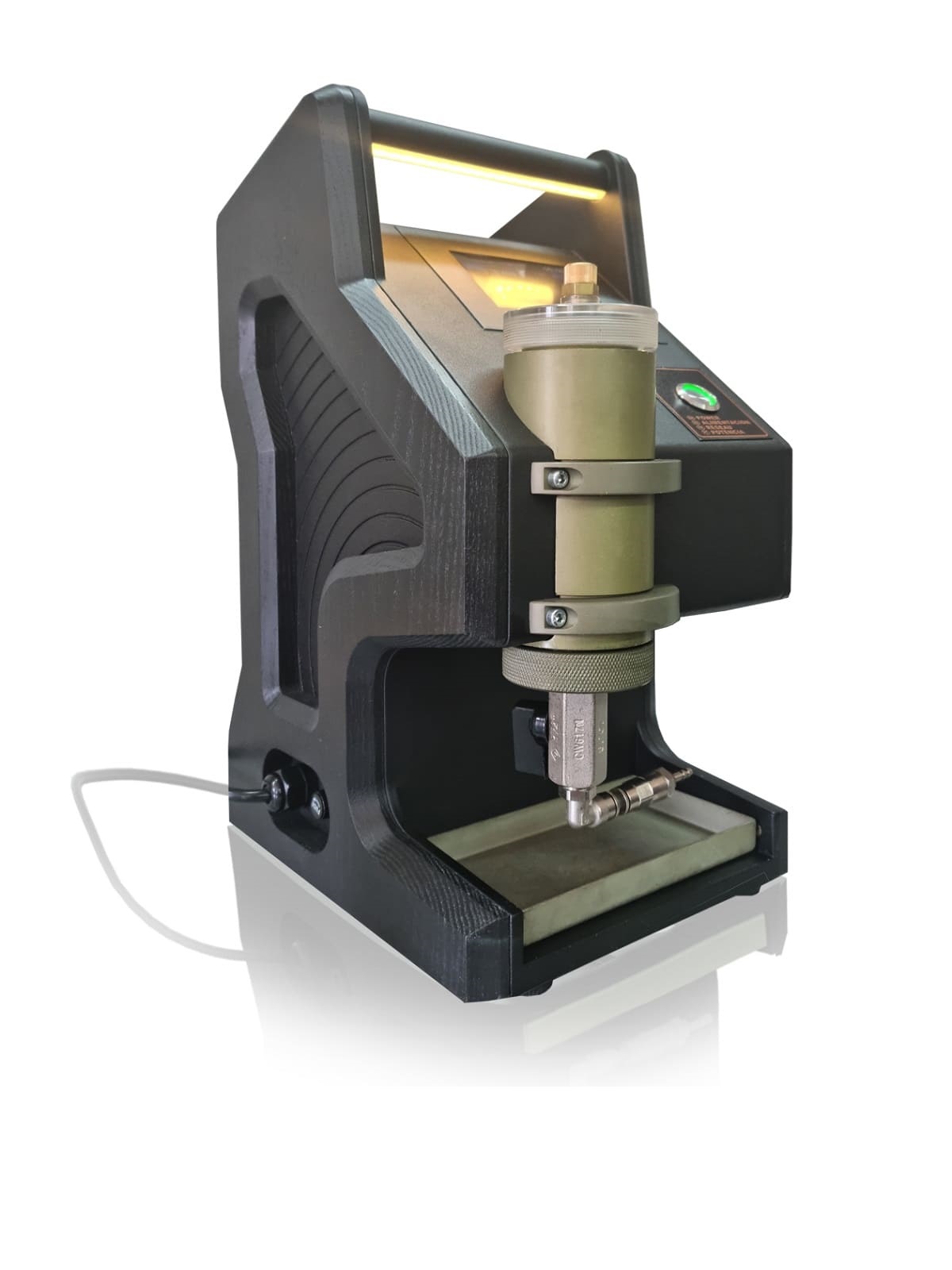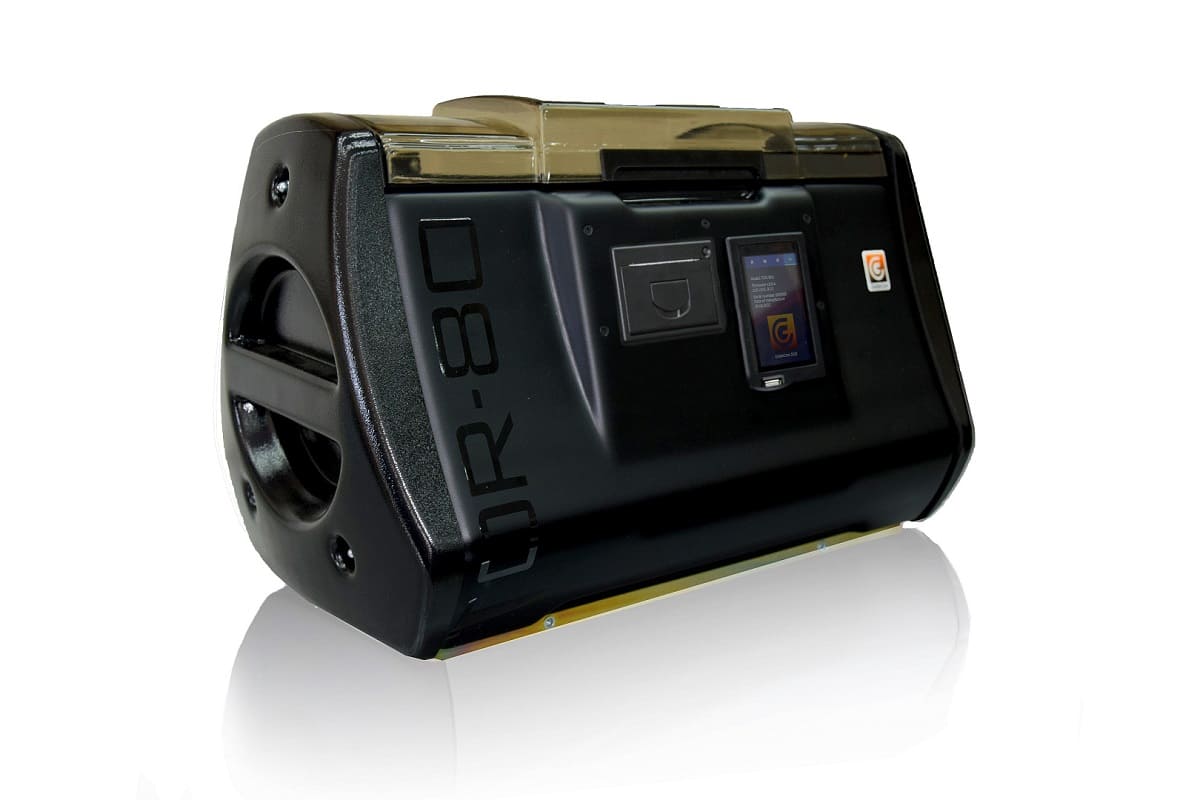Transformer oil dielectric loss testing equipment is used both at the stage of checking the quality of oil before feeding it into the transformer and during the use of oil. In this article, we will discuss what is meant by the dielectric loss tangent, what parameters it depends on, what algorithm is applied to determine it, and what kind of equipment is used for this purpose.
What is meant by the dielectric loss tangent?
If electric insulating material is placed into the electric field, energy dissipation will be observed therein. This energy is known as dielectric loss. The amount of dissipated energy is expressed in terms of the dielectric loss tangent.
The physical meaning of the dielectric loss tangent is as follows.
Imagine a dielectric to be a dielectric between the plates of a capacitor brought into a capacitive circuit.
If you measure the displacement angle between the current and the voltage of this circuit, it will be less than 90°. The angle that you need to complement the phase displacement angle up to 90° is known as the δ angle or the dielectric loss angle.
The energy loss in the capacitor characterizes the dielectric loss tangent which is numerically equal to the ratio between active and reactive power at the sinusoidal voltage of certain frequency.
Why is it important to determine the dielectric loss tangent of transformer oil and what is the difference in the informative value of measuring this parameter and the breakdown voltage? Breakdown voltage is the maximum voltage that must be applied to transformer oil in order to cause an instantaneous breakdown. In a strict sense, breakdown voltage is a characteristic of oil on the spot. The dielectric loss tangent is a more flexible parameter, because it allows:
- evaluating the purification degree of new oils at a petroleum refinery during production and the readiness thereof for feeding into high-voltage equipment;
- for oils in use, the dielectric loss tangent allows estimating how much longer they can be used in high-voltage equipment before change or regeneration.
Therefore, dielectric loss testing equipment should be present in the laboratories of both petroleum companies that produce electrical insulating oils and the companies dealing with maintenance and repair of transformers.
What does the dielectric loss tangent depend on?
The dielectric loss tangent value depends on the following factors;
- type of dielectric;
- quality of dielectric;
- ambient temperature (at room temperature, the dielectric loss tangent is usually minimal);
- AC frequency at which measurement is taken (as the frequency goes up, the dielectric loss tangent value increases).
The quality of transformer oil as a dielectric deteriorates which results from long-term storage and long-term use. Among the operational factors leading to increased dielectric loss tangent of transformer oil, we highlight moisturization and the presence of entrapped air. If the tangent rises with an increase in applied voltage, it means that the oil contains entrapped air. Under the influence of operational factors, the dielectric loss tangent can increase several times compared to the same indicator for fresh oil. Such increases must be timely tracked using the dielectric loss testing equipment.
How is the dielectric loss tangent of transformer oil measured?
Let’s discuss the operation principle of dielectric loss testing equipment. It is based on measuring the difference between the amplitudes and phases of signals obtained when the test sinusoidal voltage with the effective value of up to 2 kV is simultaneously applied to a reference capacitor and a measurement object represented by a measuring cell.
A measuring cell is a metal vessel consisting of two electrically insulated parts (internal and external electrodes) between which transformer oil is poured.
As a matter of fact, a measuring cell is an electrical capacitor the plates of which constitute internal and external electrodes. Test voltage is applied to the external electrode, and a desired signal is picked up from the internal electrode.
The amplitude and phase of the signal coming from the reference capacitor fall within the range of permissible tolerances and are considered constant.
The amplitude difference of the signals picked up from the reference capacitor and the internal electrode of the measuring cell is proportional to the dielectric permittivity of the liquid under study.
The phase difference between the signals picked up from the reference capacitor and the internal electrode of the measuring cell characterizes the dielectric loss tangent value.
TOR-3 oil tangent delta tester
GlobeCore has developed a dielectric loss tester known as TOR-3 which includes measuring the dielectric permittivity of insulating oils. The main advantages of the instrument are automatic measurements, precision, versatility, convenience, operational safety, and reliability.
The operation of TOR-3 instrument is controlled using a computer by giving commands to perform certain actions. A command to start measurements is given after feeding the oil into the measuring cell and connecting the instrument to the power mains. The instrument attains specified characteristics and starts to take the first values of the dielectric loss tangent and the dielectric permittivity thereafter.
The measurement tolerance of the dielectric loss tangent does not exceed one percent plus eight hundred thousandths, and that of dielectric permittivity — two percent. High measurement accuracy is achieved owing to new GlobeCore technologies used in developing the structure of a reference capacitor, as well as predetermined calibration of an empty measuring cell using a special software program.
It is not necessary to remove the cell when proceeding to test the next sample. It is enough to give a command from the computer to open the oil drain valve into a special tray. The tray oil is removed into a separate container, and the next sample is fed into the cell.
All electronic modules and parts are compactly placed in a single housing; thus, none of the instrument overall dimensions exceeds forty-five centimeters, and the weight is not greater than five and a half kilograms. Owing to compactness and light weight, and the handles integrated into the housing, TOR-3 instrument can be easily moved on the desk or carried inside the laboratory.
A microprocessor, a digital-to-analog converter, and a high-voltage amplifier contained in the instrument allow generating a test signal of any shape and operating in a wide range of amplitudes. Therefore, TOR-3 is versatile and can be used to measure the dielectric loss tangent according to standards with different test voltage requirements.
The operational safety of the oil tangent delta tester is achieved by making the housing and the top layer of the measuring cell cover from durable insulating material. It secures laboratory staff against electric shock.
The presence of TOR-3 dielectric loss tester in your laboratory allows solving two problems at once: to determine the suitability of new oil for feeding into the transformer, and to find out how long the oil can be used without change or regeneration. It enhances the operation reliability of transformers and eliminates the emergencies associated with malfunctions of the insulation system. If you follow the operating rules, you can be sure that these problems will be successfully solved using one instrument for at least ten years.


 TOR-2 Hydrogen and ...
TOR-2 Hydrogen and ... TOR-80 (TOR-80 LSL) ...
TOR-80 (TOR-80 LSL) ...